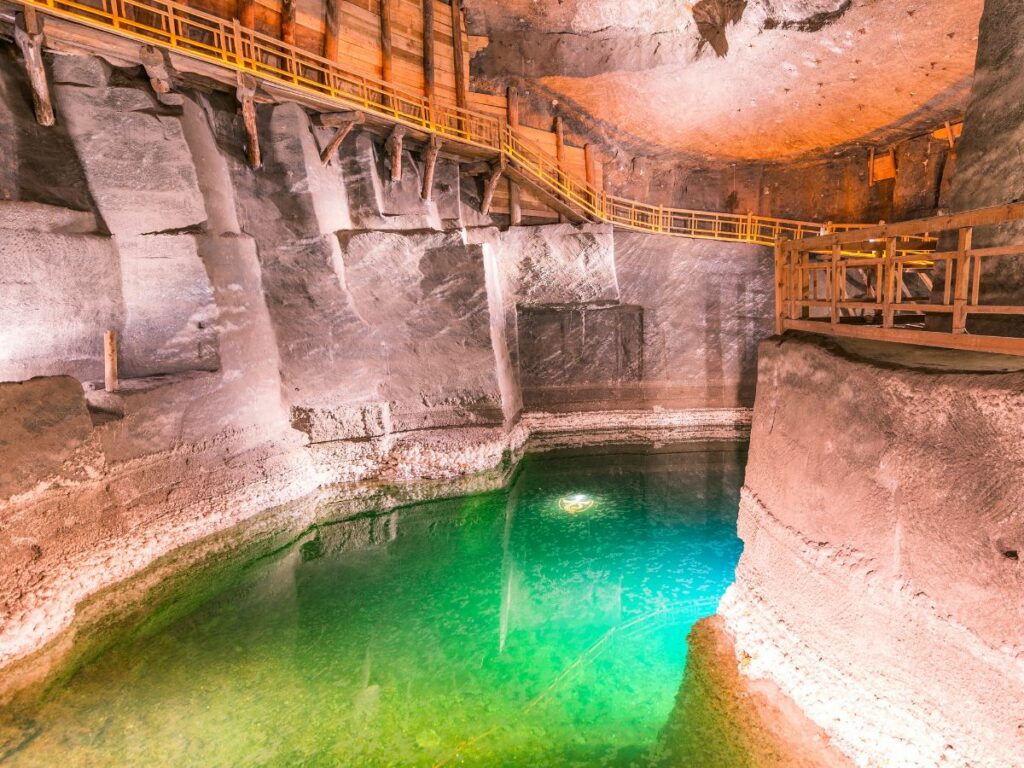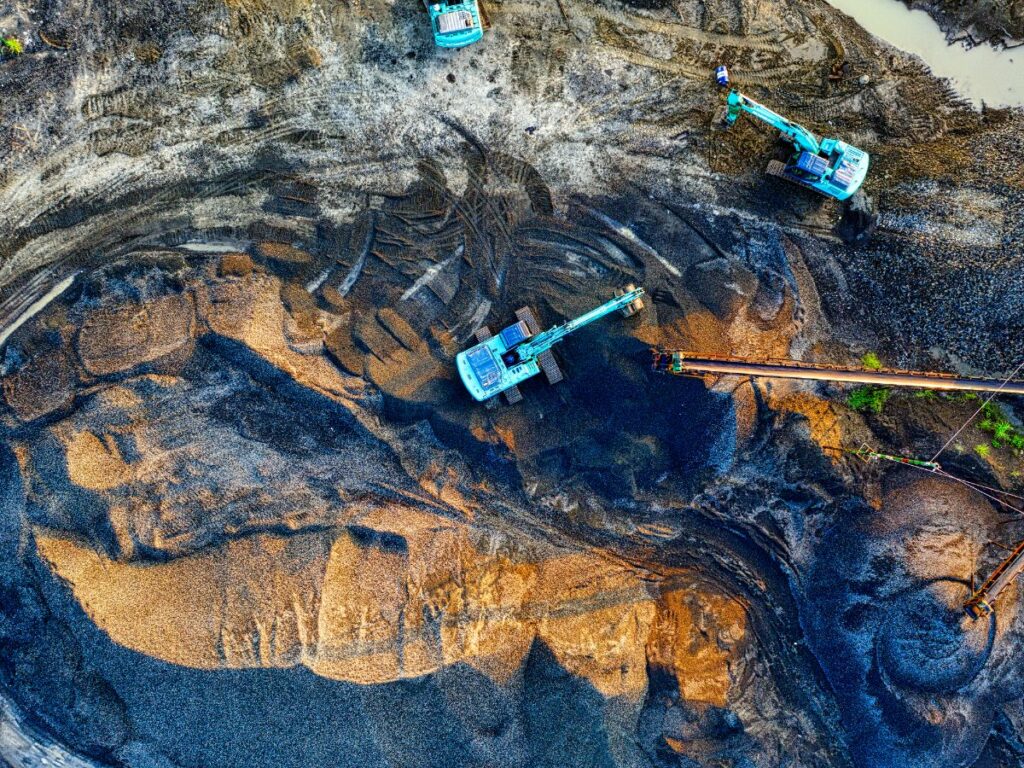Page Contents
Definition: Mining finance encompasses funding methods for exploration, extraction, and processing projects within the mining industry.
Capital Structure: It comprises various layers including debt, equity, royalties, and streaming agreements, each suited to the industry’s specific demands.
Objective: To provide necessary funding across project phases, addressing the unique risks and investment requirements of the mining sector.
What is sustainable mining?
Sustainable mining refers to the practice of conducting mining activities in a way that minimizes the negative environmental and social impacts of these activities while maximizing the benefits to society.
This includes practices such as minimizing waste and pollution, ensuring the safety and well-being of workers, and engaging with local communities.(1)(2)
Understanding sustainability in the mining industry
The mining industry plays a critical role in global development, and it’s essential to balance its economic, environmental, and social impacts.
Sustainable mining practices should ensure that natural resources are used efficiently and responsibly without compromising the ability of future generations to meet their needs.
How mining companies can contribute to sustainable development
Mining companies can contribute to sustainable development by implementing sustainable practices that minimize social and environmental harm.
These practices can include using renewable energy sources, managing waste disposal responsibly, and ensuring that mining activity does not encroach on the rights of local communities.
The importance of socially and environmentally responsible mining practices
Socially and environmentally responsible mining practices are important in safeguarding the environment and protecting people from the negative consequences of mining activities.
Mining companies need to ensure that their operations do not harm local communities and the environment, and that they contribute to the development and prosperity of the communities they operate in.

Project finance in the mining sector
One way that mining companies can achieve sustainability goals is through project finance.
Project finance is a financing structure that is commonly used to fund infrastructure development projects, including mining projects.
It involves lenders or investors providing financing for a specific project, with the revenue from the project used to repay the loans or investments.
Alternative financing options for mining projects
Besides project finance, mining companies can also explore alternative financing options such as equity financing, debt financing, and public-private partnerships.
These options provide different advantages and risks, and the choice of financing will depend on factors such as the size and type of the mining project, the cost of capital, and risk appetite.(3)
Financing structures in the mining industry
Financing structures in the mining industry can include senior debt, mezzanine debt, equity, and other financial instruments.
The choice of financing structure will depend on the project’s size, stage of development, and risk profile.
The benefits and risks of project finance in mining operations
Project finance provides several benefits to mining companies, including access to capital, flexibility in payment structure, and the ability to transfer risk to the lender or investor.
Additionally, project finance can provide a mechanism for ensuring that mining companies implement sustainable practices.
However, project finance also comes with risks, such as the risk of default, variation in commodity prices, and political risks in developing countries.
The Role of Project Finance in Achieving Sustainable Mining
Project finance plays a crucial role in achieving sustainable mining practices.
Through project finance, mining companies can finance infrastructure projects that support sustainable mining practices, such as implementing renewable energy sources, reducing water usage, and managing waste responsibly.
The partnership between project finance and sustainable mining
Project finance and sustainable mining are complementary practices that can be used together to achieve sustainability goals.
Project finance provides the financing for infrastructure projects that support sustainable mining practices, while sustainable mining practices ensure that mining operations are conducted in a socially and environmentally responsible manner.
Together, these practices can improve the sustainability of the mining sector.
The importance of stakeholder engagement in sustainable mining
Stakeholder engagement is an essential aspect of sustainable mining and should be integrated into project planning.
This involves engaging with local communities, non-governmental organizations, and other stakeholders to understand their needs and perspectives and to ensure that mining activities are aligned with their priorities.
The role of due diligence in ensuring environmentally sustainable mining operations
Due diligence is essential in ensuring that mining operations are conducted in an environmentally sustainable manner.
This involves identifying potential environmental risks and developing strategies to mitigate them.
Due diligence should be conducted at all stages of the project, from exploration to closure, to ensure that mining activities do not harm the environment.

International mining and sustainability
International partnerships can play a crucial role in promoting sustainable mining practices.
The mining industry is a global one, and there is a need for international cooperation to ensure that mining activities are conducted responsibly and in accordance with international standards.
How global partnerships can promote sustainable mining practices
Global partnerships can promote sustainable mining practices by providing funding, technical expertise, and knowledge sharing.
Partnerships between governments, mining companies, and civil society can ensure that mining activities are conducted in a way that supports sustainable development.
The impact of sustainable mining on metal and mineral supply chains
Sustainable mining practices can have a positive impact on metal and mineral supply chains.
Sustainable mining practices can increase the availability of responsibly sourced minerals and metals, reduce risks for buyers, and increase demand for sustainably sourced products.
Incorporating renewable energy and other sustainable practices in mining operations
Mining companies can incorporate renewable energy and other sustainable practices into their operations to reduce their environmental impact.
Renewable energy sources such as solar, wind, and hydro can provide a sustainable source of energy, reducing reliance on fossil fuels.
Other sustainable practices can include reducing water usage and managing waste responsibly.
ESG and financing in the mining industry
ESG criteria, which stands for environmental, social, and governance, has become an increasingly important aspect of financing in the mining industry.
ESG criteria are used to evaluate the non-financial risks and opportunities related to an investment, and they can be used to assess the social and environmental impact of mining activities.
Understanding ESG criteria and its importance in mining finance
ESG criteria are used to assess the environmental and social impact of mining activities, as well as the governance structure of mining companies.
It’s essential to consider the non-financial risks and opportunities associated with mining investments to ensure that sustainable practices are implemented.
How mining companies can use ESG criteria to attract investors
Mining companies can use ESG criteria to attract socially responsible investors who prioritize sustainable practices.
By demonstrating a commitment to sustainable mining practices and implementing ESG criteria, mining companies can increase their appeal to investors and reduce the risk of reputational damage related to negative social or environmental impacts.(4)(5)
Integrating ESG criteria into mining financing agreements
Integrating ESG criteria into mining financing agreements can ensure that sustainable practices are implemented in the mining sector.
The Equator Principles, which are a set of environmental and social guidelines for project finance, are an example of how ESG criteria can be integrated into financing agreements and promote sustainable practices in developing countries.
Conclusion
The mining sector plays a pivotal role in sustainable development, with project finance serving as a key instrument in promoting environmentally and socially responsible mining practices.
By embracing sustainable mining operations, the industry can significantly contribute to achieving the Sustainable Development Goals (SDGs), ensuring that it remains a vital yet responsible player in the global economy.
REFERENCES:
- International Energy Agency, Encouraging sustainable and responsible practices, retrieved from https://www.iea.org/reports/introducing-the-critical-minerals-policy-tracker/encouraging-sustainable-and-responsible-practices
- International Institute for Sustainable Development, retrieved from https://www.iisd.org/articles/deep-dive/how-advance-sustainable-mining
- McKinsey & Company, Alternative financing in mining, retrieved from https://www.mckinsey.com/industries/metals-and-mining/our-insights/alternative-financing-in-mining
- Canadian Mining, David Walker, What does ESG mean for the mining industry?, retrieved from https://www.canadianminingjournal.com/featured-article/what-does-esg-mean-for-the-mining-industry/
- David Walker, ESG Insights: What does ESG mean for the Mining industry?, retrieved from https://www.slrconsulting.com/insights/esg-insights-what-does-esg-mean-for-the-mining-industry/

